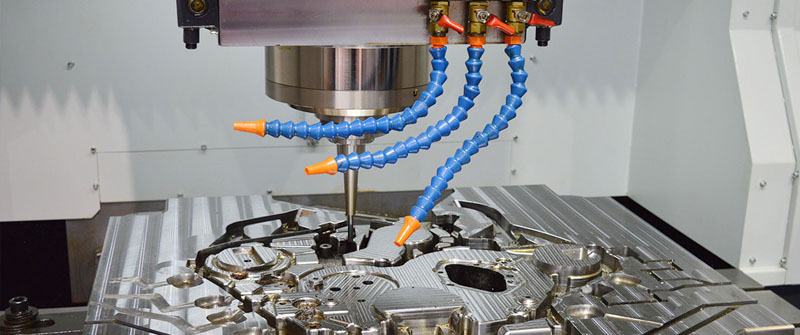CNC machining methods are often used to manufacture custom parts with high strength and tight tolerances. Engineering CNC machined parts can help speed up the manufacturing process of precision machined parts while saving costs. Small improvements in the design will significantly reduce the cost of the project. In order to fully optimize your CNC machined part design, you should consider some tips and tricks when designing machine parts.
Avoiding common mistakes can help improve design, shorten run time, and possibly reduce final manufacturing costs. By checking your design against this list before submitting for manufacturing, you can save a lot of time and cost.
Check If The Drawings Are Clear And Accurate
An effective machined part design process starts with clear, clear and accurate drawings that clearly describe the components. Avoid using colors such as yellow, blue, or light gray, as they are often difficult to read and scan poorly. Easy-to-read drawings eliminate guesswork in the manufacturing process. Since this is usually the only thing a store needs to deal with, it is important to ensure that your information is clear and clear so that manufacturers can understand all the details of the parts they make. Legibility is important, but drawings and prints must also provide consistent and clear information. Depth data is more important than precise scale and can ensure the best accuracy. Each drawing should convey the dimensions and tolerances of the product, and carry clear labels to identify all required materials and finishes.

Try To Choose Standard Size Holes
The cutting length of end mills is limited, and usually works best when the cutting depth reaches three times the cavity diameter. In order to minimize costs, we recommend limiting the cavity depth to four times the tool diameter to ensure good results. Any machined parts larger than this range will increase the cost because of the need for special tools or a multi-axis CNC system. If greater cavity depth is required, please consider designing machine parts with variable cavity depth. The use of standard drills can quickly and accurately carry out CNC machining holes. The hole size can be machined into non-standard sizes without the need for end mills or reamers. This will help reduce machine time and reduce costs. Likewise, limit the depth of all holes to four times the diameter.
Prioritize Rounded Inner Corners
Since all CNC drill bits are round, it is difficult to obtain sharp inner corners. On the contrary, the drill bit will leave an unprocessed space called the inside corner radius. Alternative methods (such as electrical discharge machining) can be used to machine sharp inner corners, but these methods are often expensive.
Avoid sharp inner corners as much as possible. Ideally, the corner radius needs to be slightly larger than the tool. If the corner radius is the same as the diameter of the tool used to form it, it will cause chatter and premature tool wear.
Consider The Wall Thickness Of The Part
Although CNC machine tools can perform very fine cuts on the workpiece, processing very thin walls can lead to insufficient stability. For metal CNC machining, thin walls will increase chatter, which will affect the accuracy of the machining process and the surface finish of the parts. For plastics, thin walls can cause warpage and softening. Therefore, you should try to avoid designing thin-walled parts.
Avoid Unnecessary Tight Tolerances
Often, the multiple surfaces of a part are critical to its function. The more features that have tighter tolerances, the higher the manufacturing cost of the part. Because this increases the processing time and cost of the processed parts. Therefore, only strict tolerances are assigned on certain key features and surfaces, while other secondary features should be controlled by a standard.
Reduce Small Features And Split Complex Parts
Small features such as micro-holes (under 2.5mm in diameter) will increase processing difficulty and processing time, so unless absolutely necessary, they should be avoided. It is cheaper to machine multiple simple parts than one complex part. Especially for precision machined parts with deep cavities, it takes several hours of processing time to remove the material and increase the material cost. Most shops charge extra for more complex machine parts. This is because if an error occurs, it is more expensive to redo the complicated part than to redo the simple part. Therefore, if possible, split the complex parts into simple parts, and then assemble them together.
Consider Whether To Add Text
Adding text to a machined part is a reliable way to make it recognizable or brand specific. This is also a reliable way to increase costs, so it is considered a luxury for functional components.
Your component may require a processed part number, description, or company logo. Or you might think that some text looks cool in a certain part. However, adding text will also increase costs. And the smaller the text, the higher the cost. This is because the very small end mills that cut the text run at a relatively slow speed, increasing your running time and thus increasing your final cost. However, you do have a choice. If your part can hold it, cutting larger text will be significantly faster, thereby reducing your costs. And when possible, choose concave rather than raised text, which requires milling material to create letters or numbers on the part.
Avoid Small And Deep Holes
Machined parts can contain round holes created using drills or end mills. The depth of these holes is limited. Diameters exceeding ten times become more difficult and may result in higher costs. Generally, end mills can machine holes with better surface finish and provide greater flexibility in hole size. However, their length is limited.



